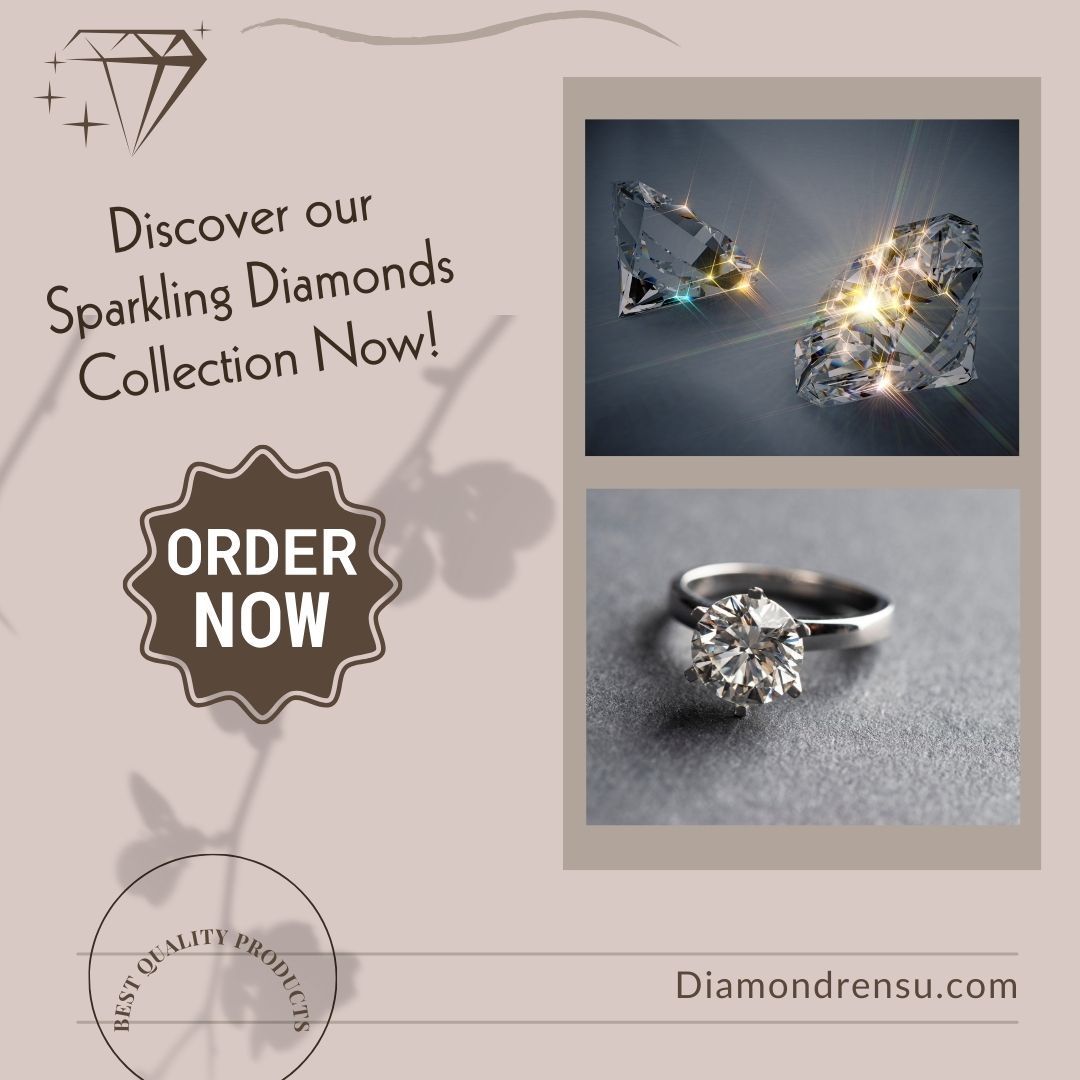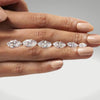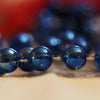
What is Dispersion in Gemstones: Understanding Light and Sparkle
Dispersion in gemstones is a phenomenon I observe as the splitting of white light into its spectral colors when it passes through a faceted gem. This creates a play of color across the spectrum, often seen as flashes of rainbow-like colors when the gem or light is moved. Different gem species exhibit varying degrees of dispersion, which is a critical factor contributing to their beauty and perceived value.
Table Of Contents
- Understanding Dispersion
- Components of Dispersion
- Analyzing Gemstone Features
- Quantifying Dispersion
- Impact of Dispersion on Value
- Notable Gemstones with High Dispersion
- Colorful Spectacle of Dispersion
- Gemstone Varieties and Dispersion
- Advancements in Dispersion Measurement
- Frequently Asked Questions
The technical aspect of dispersion involves the refractive index of the gem material, which determines how much the light is bent when entering the stone. Gemstones with a high dispersion will bend light to a greater extent, separating it more thoroughly into its constituent colors. This results in the vivid flashes of color I often associate with precious stones such as diamonds.
Understanding how gemstones interact with light is crucial for appreciating their allure. When I look at a gem, I see the artistry of nature combined with the skilled handiwork of gem cutters, who enhance the optical properties to maximize the stone's dispersion and overall brilliance. The interplay between light and the internal features of gemstones such as dispersion is part of what makes them so captivating and sought after.
Understanding Dispersion
As I explore the wonder of dispersive effects in gemstones, I find that this phenomenon contributes significantly to the appeal of precious stones through its vibrant display of colors. Let me guide you through the intricacies of dispersion.
Definition of Dispersion
| Aspect | Description |
|---|---|
| Definition | Dispersion in diamonds refers to the phenomenon where white light is separated into its component colors, creating a spectral display known as fire. |
| Causes | Dispersion in diamonds occurs due to the diamond's high refractive index and its ability to bend light, causing it to slow down and disperse into various spectral colors. |
| Impact on Appearance | Dispersion enhances a diamond's beauty by adding colorful flashes of light, which contribute to its brilliance and allure. |
| Measurement | Dispersion is quantified using specialized equipment such as spectrophotometers to measure the degree of spectral separation in a diamond. |
| Factors Affecting Dispersion | Factors like cut quality, diamond clarity, and the presence of inclusions can influence the intensity and visibility of dispersion in a diamond. |
Dispersion is the term used when describing the process by which white light separates into its component spectral colors upon passing through a gemstone. It's the same principle that allows prisms to split light into a rainbow. Gemstones with high refractive indices tend to display greater dispersion, and consequently, more noticeable fire—the flashes of color that are seen as the stone is moved under a light source.

Causes of Dispersion
The primary cause of dispersion in gemstones is the refractive index which varies with the wavelengths of light. Each wavelength of light—each color—bends, or refracts, by a different amount when it passes from one medium into another, in this case, air to gemstone. This refraction occurs because light travels at different speeds through different materials. The variance in speed between different wavelengths of light leads to a separation of the colors, creating a delightful display reminiscent of a miniature rainbow.
Light and Its Interaction with Gemstones
When light enters a gemstone, it interacts with the internal structure of the mineral. White light is a blend of all the colors of the spectrum, and gemstones act as a filter, that reflects and refracts this light. As the light exits the stone, it splits into a display of spectral colors, which we perceive as brilliance and fire. The angle at which light enters a gemstone determines which colors will be dispersed, and this largely depends on the cut of the gem. A well-cut gemstone will have an optimal balance of brilliance and fire, maximizing the visual effect and value of the stone.
Components of Dispersion
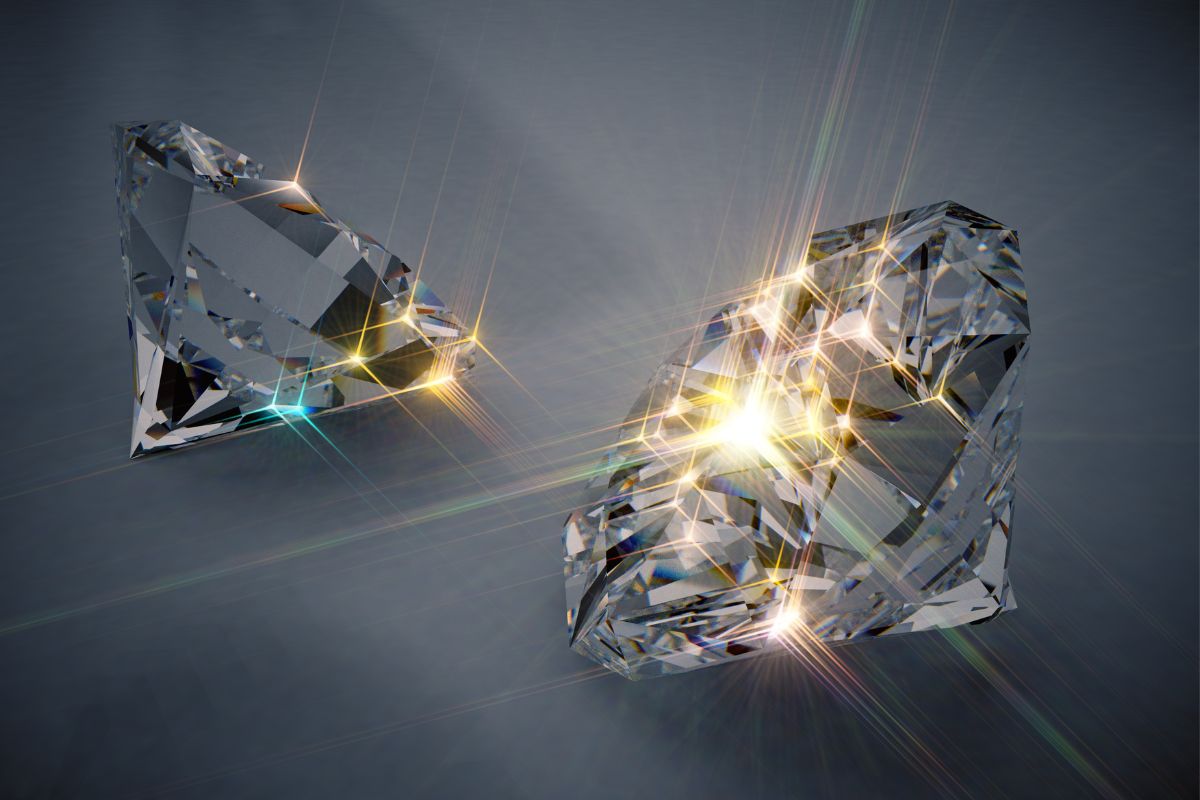
In examining dispersion in gemstones, I focus on how light splits into its spectral colors as it passes through the gem. This phenomenon hinges on specific properties, including the Refractive Index (RI) and the interaction between light's wavelength and the gem's color.
Refractive Index (RI)
The RI is a crucial measurement for understanding dispersion in gemstones. It's a number that indicates how much a material bends light. I use a refractometer to determine this value for a given gemstone. The bending of light is what causes dispersion, and the RI provides a quantitative measure of how much bending will occur. For instance, materials with a high RI will exhibit more significant dispersion and thus more noticeable spectral colors.
Wavelength and Color Interaction
Each color in the spectrum has a different wavelength, with violet light having the shortest and red light the longest. When light enters a gemstone, these varying wavelengths interact with the stone's body color, causing some colors to slow down more than others. This separation of colors is what's visible as dispersion. It is the material's ability to differentiate light by wavelength that gives me a visually quantifiable dispersion effect, contributing to the gem's beauty.
Analyzing Gemstone Features
Color
The hue and saturation of the gemstone's color, which can range from vivid to muted.
Clarity
The presence of inclusions or blemishes within the gemstone, affecting its transparency and brilliance.
Cut
The precision and craftsmanship of the gemstone's cut, influencing its brilliance, fire, and overall appearance.
Carat Weight
The measurement of the gemstone's weight, with larger carat weights generally indicating larger sizes.
Origin
The geographic source or location where the gemstone was mined, influencing its rarity and value.
Cut Style
The specific shape and facet arrangement of the gemstone's cut, contributing to its uniqueness and appeal.
In the realm of gemology, understanding the nuances of gemstone features is pivotal. This includes an in-depth examination of how the cut and shape, as well as the crystal structure and density, contribute to the stone's overall aesthetics and physical properties.
Cut and Shape
The cut and shape of a gemstone are crucial in determining its ability to reflect and refract light, an effect known as dispersion or "fire." Precise faceting is particularly paramount in diamonds, where the goal is to maximize brilliance. Gem cutters harness their skill to craft a multitude of shapes from the natural mineral, with popular cuts including round brilliant, princess, and pear. The number and arrangement of facets, as well as the proportions and symmetry of the cut, all play critical roles in how light interacts with a gemstone.
Crystal Structure and Density
The crystal structure of a gemstone dictates the way light travels through the stone, influencing its optical properties and contributing to its unique fingerprint. Diamonds, among other gemstones, crystallize in a cubic system that allows for high dispersion. Meanwhile, each gemstone also possesses a characteristic density, which determines its weight in relation to its size. Natural gemstones may share similarities with their synthetic counterparts, but I delve into the minute differences in structure and density to authenticate and classify these precious stones.
Quantifying Dispersion
| Gemstone | Color | Clarity | Carat Weight | Value (USD) |
|---|---|---|---|---|
| Diamond | D-F | VVS1-VS2 | 1.00 | 10,000 |
| Ruby | Red | Eye Clean | 1.00 | 5,000 |
| Sapphire | Blue | Eye Clean | 1.00 | 3,000 |
| Emerald | Green | Eye Clean | 1.00 | 2,500 |
| Topaz | Blue | Eye Clean | 1.00 | 500 |
Dispersion in gemstones refers to the spread of light into its component colors, a quality that greatly enhances a gem's appeal. Understanding and accurately measuring this phenomenon is crucial in the gemology field.
Measuring Techniques
To measure the dispersion of a gemstone, I typically use a refractometer, which is an instrument that gauges how much a beam of light is bent, or refracted, when it enters the stone. The refractometer allows me to determine the refractive index numbers, which are essential for identifying specific types of gems and their properties. To ensure precision, it's important to use calibration plates and follow the refractometer's manual for proper use.
A critical part of my measurement process involves the use of specific light sources, such as the sodium d-line or Fraunhofer lines. The Fraunhofer B-line and Fraunhofer G-line are often adopted for calibration and for obtaining accurate refractive indices. My measurements consider the gem's reaction to these reference light wavelengths, aiding in the proper characterization of the gemstone's dispersion.
Standard Reference Values
For an objective assessment, I compare my measurements to standard reference values detailed on a chart. This chart contains established refraction indices that are considered industry standards, based on common light conditions like the sodium d-line, which is the yellow light often used for dispersion measurements.
Using these standards, I can determine whether a gemstone falls within a normal range of dispersion or if it exhibits exceptional or unique optical properties. Matching these values accurately is paramount, as it affects not only the appraisal of the stone but also aids in identifying potential treatments or enhancements that could have been applied to the gemstone.
Impact of Dispersion on Value
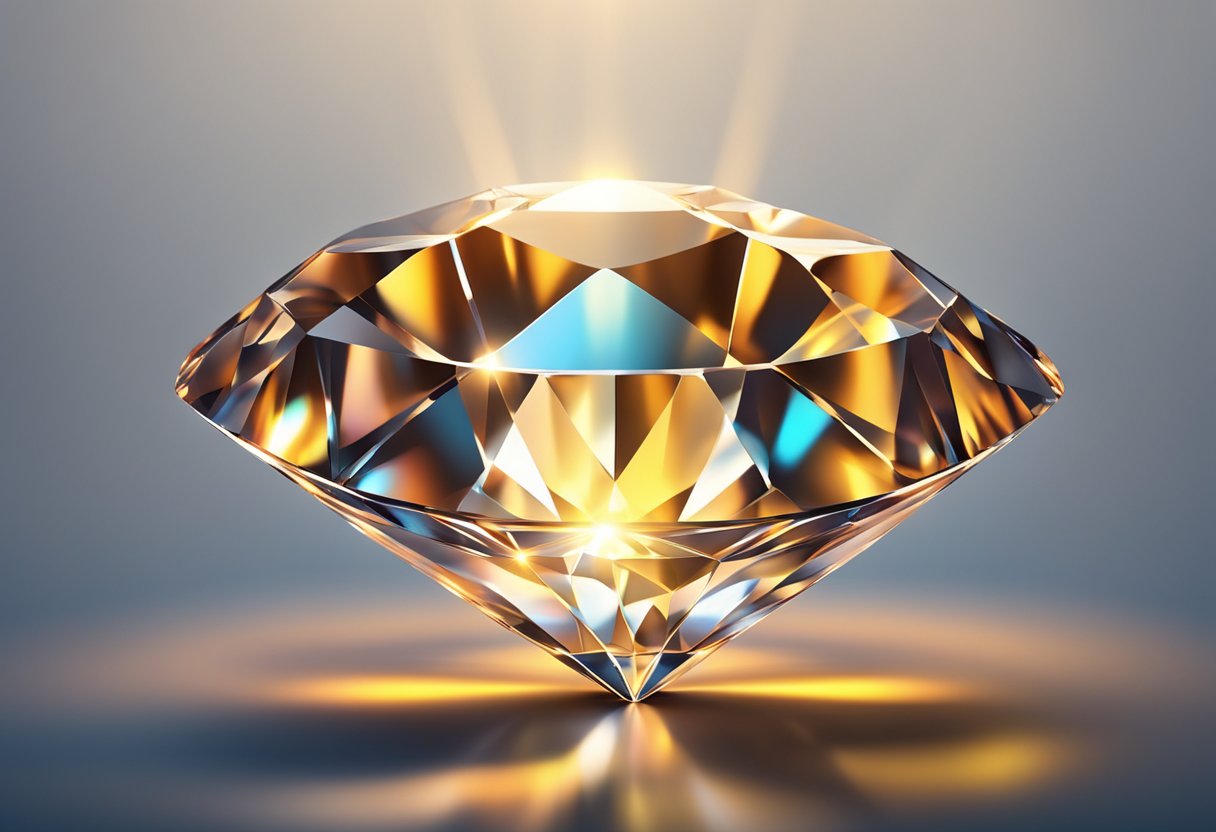
| Dispersion Level | Value Range (USD) |
|---|---|
| Low | $100 - $500 |
| Medium | $500 - $2,000 |
| High | $2,000 - $10,000 |
| Very High | $10,000 and above |
When evaluating gemstones, I consider dispersion to be a critical factor that can significantly affect their value. This optical phenomenon can enhance a stone's appeal through its rainbow sparkle, often contributing to a higher valuation.
Value Determinants
Dispersion in gemstones, commonly referred to as "fire," is the splitting of white light into its spectral colors as it passes through a gem. The more pronounced this effect, the greater the potential increase in value. Aspects such as clarity and size also play essential roles; however, dispersion provides a unique allure that can turn a simple stone into a precious jewel. It's important to recognize that not all gemstones exhibit the same level of dispersion, with some precious stones like diamonds having a notably higher fire than others.
Perception of Dispersion
The perception of dispersion and its influence on a gemstone's value varies among individuals. Yet, a gemstone that demonstrates vivid and lively rainbow sparkles is often perceived as more desirable, which I find directly correlates with its market value. As I appraise gemstones, I focus on how well the dispersion complements a stone's overall appearance without overshadowing other crucial characteristics like cut quality and symmetry. The balance between fire and the inherent beauty of the gem is crucial; too much dispersion can sometimes reduce clarity, which may affect the value negatively.
In my professional assessments, I aim to balance these elements, emphasizing the harmonious interplay of fire and clarity to arrive at an accurate valuation.
Notable Gemstones with High Dispersion
Dispersion is a property that refers to the splitting of white light into its spectral colors when passing through a gemstone. Some gemstones display this effect more prominently, and it's one of the factors that contribute to their sparkle and appeal.
Sphene and Zircon
I find Sphene, also known as Titanite, to have a very strong dispersion that often surpasses diamond. The fire that comes from sphene can be mesmerizing, with its display ranging over a broad spectrum of colors. Zircon is another gem that stands out for its high dispersion. When I look at these stones, I'm struck by their intense fire, which is particularly strong in the high-zircon variety.
Demantoid Garnet and Sphalerite
Demantoid Garnets, a variety of garnet, exhibit a dispersion that is indeed high and comparable to that of diamonds. Notably, demantoid garnets from certain localities can display this feature more pronouncedly, contributing to their deep green color with a dazzling sparkle. Sphalerite, on the other hand, has a dispersion so high that it can be almost too intense, making it a challenge to cut in a manner that balances its fire and brilliance. Nonetheless, when cut well, sphalerite exhibits a fire that is truly enchanting and unlike most other gemstones.
Colorful Spectacle of Dispersion

In the realm of gemstones, dispersion is the phenomenon that creates a dazzling array of colors, setting apart high-quality gems with a remarkable display.
Rainbow and Fire
Rainbow is often what we perceive when light splits into various colors after passing through a gemstone. This effect, reminiscent of a miniature rainbow within the stone, is referred to as fire. When I examine a gemstone, I'm observing how light is dispersed into its constituent spectral colors – the individual hues of the rainbow from red to violet – and how they flash and dance with movement.
Examining Spectral Colors
Examining a gemstone closely, one can discern the finer aspects of spectral colors. For example, the transition from red to violet within the dispersed light can be scrutinized to evaluate the quality of dispersion. Spectral colors are a crucial element for a gem's attractiveness; they contribute to its unique character and are a testament to nature's artistry within these precious stones.
Gemstone Varieties and Dispersion

Dispersion in gemstones refers to their ability to split white light into its spectral colors, creating a play of rainbow colors. This optical phenomenon is particularly relevant in transparent to translucent gemstones, and varies from one type to another, affecting their appeal and value.
Transparent to Translucent
Quartz exhibits relatively low dispersion, which doesn't significantly contribute to its appearance. Topaz is better known for its dispersion, especially in color varieties such as imperial topaz. Tanzanite can display noticeable dispersion, although it's more admired for its strong pleochroism. Peridot, often transparent, has a moderate dispersion that enhances its green to yellow-green hues.
In contrast, spinel comes close to sapphire in terms of dispersion but usually doesn't match the fire seen in diamond. Speaking of transparency, ruby and sapphire both exhibit low dispersion; their beauty stems largely from their rich color and hardness. Emerald is another precious stone with low dispersion, yet its lush green is unrivaled.
For stones like opal, dispersion is not applicable in the traditional sense. Instead, opal is valued for its unique play-of-color, which differs fundamentally from dispersion.
Special Cases
Within the gemstone world, rutile and anatase, both forms of titanium dioxide, show notable dispersion but are rarely used as gemstones. Rutile, when included within other gems like quartz, can enhance the host gem's appearance with shimmering needle-like inclusions.
Glass, while not a gemstone, is relevant here for comparison. Artificial glass can be made to exhibit high dispersion, mimicking gemstones to some extent, but lacks the hardness and overall charm of natural gems.
In summary, dispersion is a characteristic that varies across gem species, with some like diamond—notably absent from this list—being the epitome of high dispersion. The mentioned gemstones each react to light differently due to their unique optical properties, which shapes their allure and the way I, as a jeweler or collector, value them.
Advancements in Dispersion Measurement
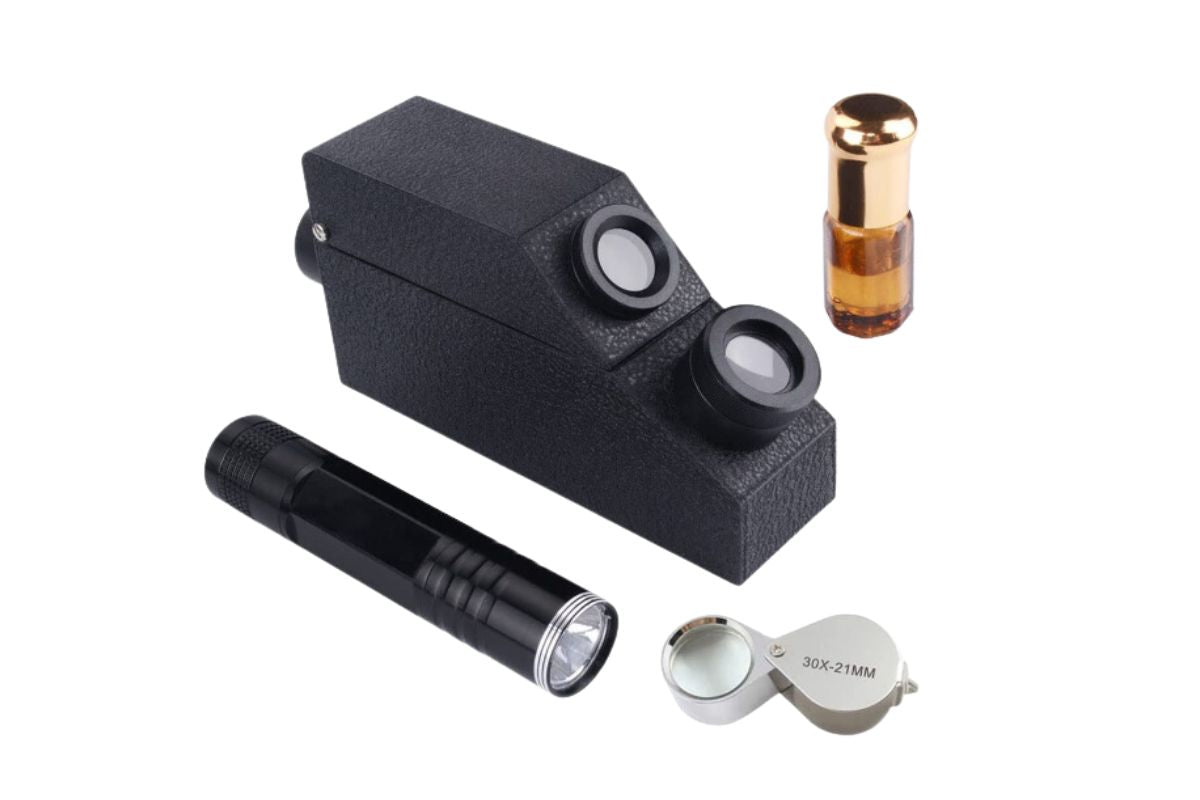
Measuring dispersion in gemstones has historically been crucial to evaluate their optical properties, and improvements in these measurements directly benefit gemologists in their analysis. These advancements allow for a more precise understanding of gemstone properties like the Mohs hardness and refractive indices.
Modern Refractometers
I've observed significant progress in the use of refractometers for measuring the dispersion of gemstones. Today's instruments, such as those utilizing lithium niobate, employ the minimum deviation method, providing a more accurate index based on the total internal reflection phenomena. The modern digital refractometer, unlike its predecessors, enables gemologists to attain precise readings. These readings matter greatly because they correlate with the path of light within the gemstone, impacting the perceived color and brilliance.
Interference Filters
Interference filters have also seen considerable improvements. Specifically, narrow bandpass interference filters are used to isolate the C and F lines of the spectrum. These filters allow me to analyze the specifics of light passage through a gemstone at these wavelengths. Advances in this area have facilitated measurements that are vital because the precise spectral assessment can reveal details about the gemstone's chemical composition and structural integrity, which, are both essential to determining its value and authenticity.
Also Read
Frequently Asked Questions
In my experience with gemstones, dispersion is a crucial factor that contributes to their scintillating beauty. Here, I’ll answer several key questions about dispersion and its impact on gemstone appeal and value.
How does dispersion affect the appearance of a gemstone?
Dispersion is the dimensional split of light into its spectral colors as it passes through a gemstone. This phenomenon creates a play of rainbow colors, commonly referred to as 'fire,' enhancing a gemstone's visual allure.
Which gemstone has the highest dispersion value?
Diamonds are renowned for their high dispersion values, but among colored stones, the gemstone with the highest dispersion is sphalerite. Its dispersion can surpass that of diamonds, resulting in exceptional fire.
Can the dispersion of a gemstone impact its value?
Yes, the dispersion of a gemstone can significantly influence its value. Gems with greater dispersion often have more fire and are perceived as more desirable, which can translate to higher market prices.
How can one measure the dispersion in gemstones?
The dispersion in gemstones is typically measured using a refractometer, which calculates the gem's refractive index and its dispersive power. Gem testing tools are specifically designed to assess these properties precisely.
What role does dispersion play in the brilliance of diamonds compared to other gemstones?
Dispersion is critical to a diamond's brilliance because it contributes to the stone's unique sparkle. When compared to other gemstones, the high dispersion of diamonds gives them their characteristic 'fire'—a major reason for their popularity.
Are there any synthetic gemstones with dispersion properties similar to natural stones?
Synthetic gemstones, like cubic zirconia and synthetic moissanite, exhibit dispersion properties akin to natural stones. In fact, moissanite has a dispersion that is even higher than that of a natural diamond, making it an attractive, fiery alternative.
Checkout some of our top collections:
